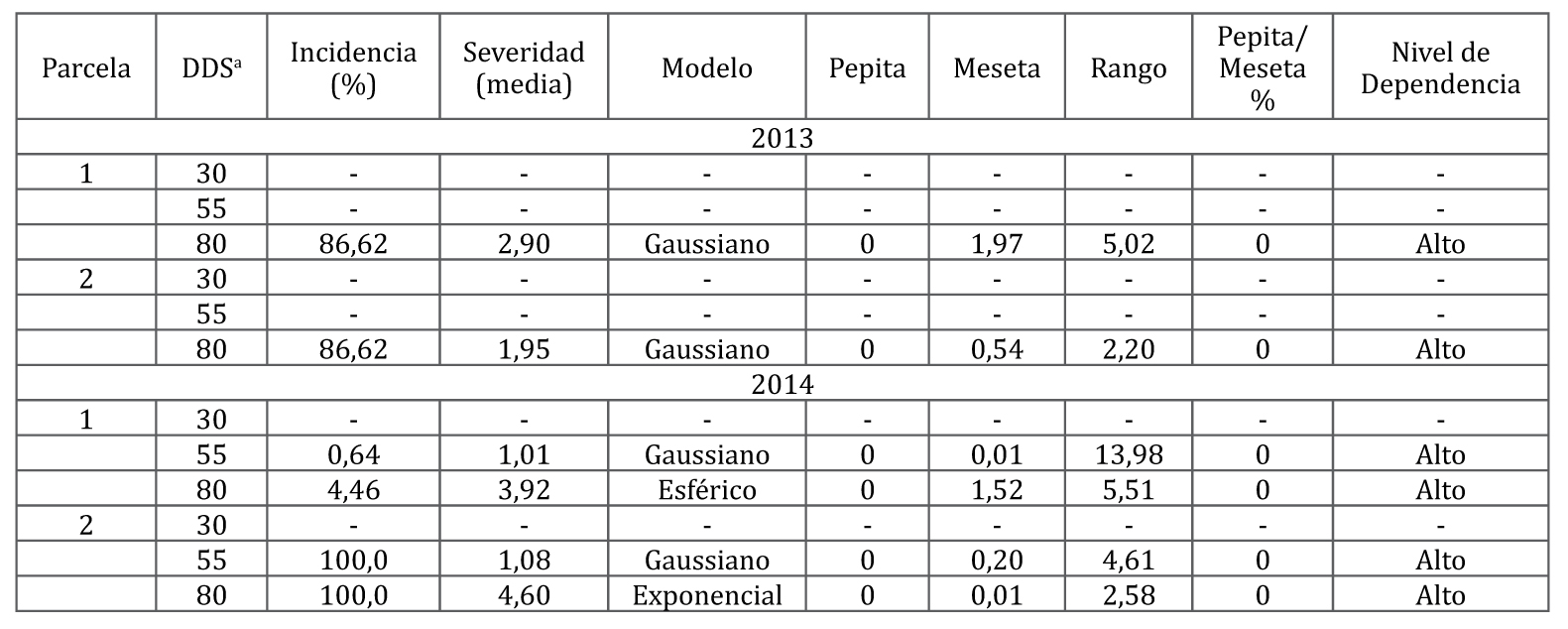Spatial distribution of gladiolus rust (Uromyces transversalis) during spring-summer cycle in the southeast region of the state of Mexico
Keywords:
Uromyces transversalis, gladiolus, semivariogramAbstract
Gladiolus rust, caused by Uromyces transversalis, affects foliage and reduces flowerquality of Gladiolus spp.; this can lead to severe economic loss because of reduced yields,and even total crop loss. Spatial analysis studies of this disease are fundamental in orderto plan strategies to manage crop health, improve sampling methods, and determineboth current and potential production losses. The aim of this study was to analyzethe spatial distribution of rust using geostatistical techniques in the municipalities ofOcuilan, Tenancingo and Villa Guerrero, in the southeastern region of the State of Mexico,during the spring-summer growing cycles of 2013 and 2014. The severity level of thedisease was estimated at 121 georeferenced sampling points within each evaluatedarea. Gladiolus rust showed an aggregated spatial distribution in the different cropphenological stages during which it expressed throughout the two years of the study.The spatial dependency model was best described by the Gaussian model, followed bythe spherical one.
Downloads

Downloads
Published
How to Cite
Issue
Section
License
Aquellos autores/as que tengan publicaciones con esta revista, aceptan las Políticas Editoriales.










.jpg)




